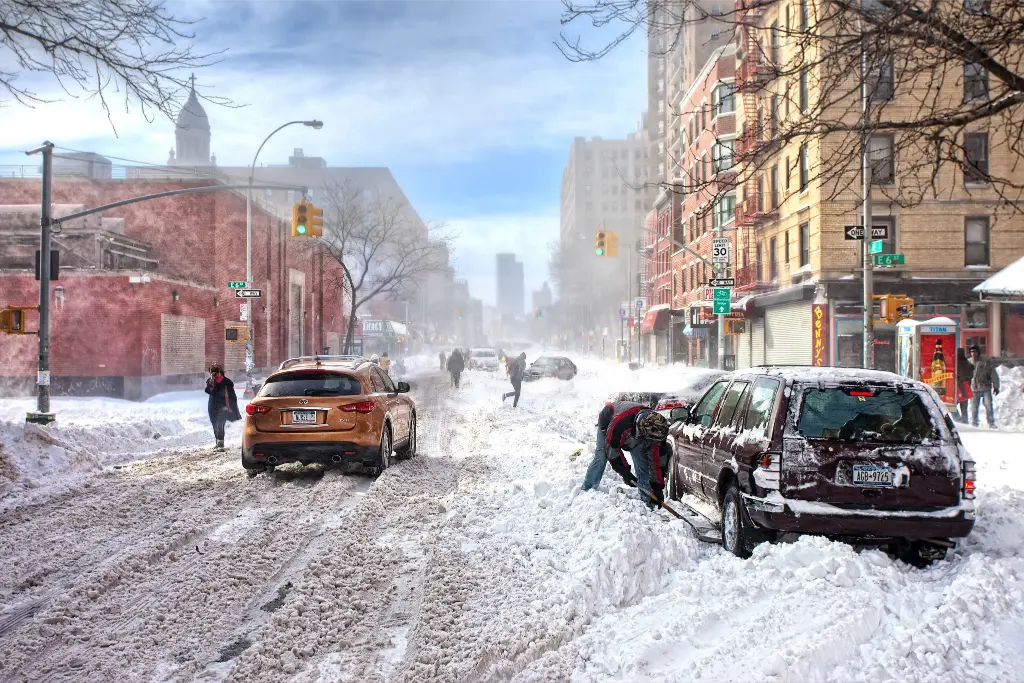The United States is bracing for what meteorologists are calling the “heaviest snowfall in a decade” in some regions, a reminder of the significant weather events that have impacted the nation over the past ten years.
From the relentless blizzards that buried cities to the ice storms that paralyzed transportation networks, heavy snowfall events have left lasting marks on communities, economies, and infrastructure.
These storms often brought cities to a standstill, caused billions in damages, and led to tragic loss of life. Their impacts rippled through supply chains, disrupted air travel, and posed grave risks to public safety, from power outages to medical emergencies.
When reflecting on previous heavy snowfalls, the physical and economic toll becomes clear.
Major snowstorms have overwhelmed emergency services, forced the closure of schools and businesses for days, and rendered major highways impassable.
Airports have struggled to clear runways, leaving thousands of passengers stranded, while supply chains ground to a halt as snow buried transportation hubs.
In some cases, entire regions experienced power outages lasting for days, creating life-threatening conditions for those unable to heat their homes.
The question of whether such events are linked to climate change is increasingly prominent.
Scientists suggest that while individual snowstorms cannot be directly attributed to global warming, the conditions leading to extreme snowfall can be influenced by climate shifts.
For instance, a warming Arctic may disrupt the jet stream, causing prolonged cold spells and increased snowfall in some regions.
Paradoxically, as the planet warms, the atmosphere holds more moisture, which can lead to heavier precipitation—including snow—in colder areas.
However, the relationship is complex and remains a topic of ongoing research.
To mitigate the effects of these storms, counties and cities mobilize a range of resources.
Snowplows and salt trucks operate around the clock to clear roads, while emergency response teams address accidents and power outages.
Many local governments have invested in advanced weather monitoring systems to improve preparedness, and shelters are set up for those in need.
Public communication plays a crucial role, with authorities urging residents to stay indoors, avoid unnecessary travel, and stock up on essential supplies.
Despite these efforts, heavy snowfalls expose the vulnerabilities of urban infrastructure. Traffic accidents spike as roads become treacherous, and emergency services are stretched thin responding to crises.
Local governments face challenges not only in immediate snow removal but also in addressing long-term impacts, such as repairing damaged infrastructure and managing the economic fallout from prolonged closures.
The northeastern United States has experienced several remarkable snowstorms over the past decade that have left significant impacts on the region. These events often blanketed cities and towns in feet of snow, shutting down major transportation networks, disrupting daily life, and straining emergency services.
In some instances, snowfall totals exceeded historical averages, setting records and challenging even the most prepared municipalities. Cities like Boston, New York, and Philadelphia were particularly hard hit during these storms, with dense urban areas struggling to clear roads, sidewalks, and public spaces.
For example, some storms resulted in extraordinary snowfall accumulations over a short period, burying communities and overwhelming snow removal efforts.
Transportation was severely affected, with major highways rendered impassable and air travel coming to a standstill as airports shut down due to dangerous conditions. Rail services also faced significant disruptions, leaving commuters stranded.
In addition to transportation challenges, the weight of heavy snow caused widespread damage to infrastructure, collapsing roofs and downing power lines, which led to prolonged outages in some areas.
The economic consequences of these storms were profound, with businesses forced to close for days and governments allocating significant resources for cleanup and recovery.
The storms also exposed vulnerabilities in the region’s infrastructure, particularly in areas where aging systems struggled to withstand the combination of heavy snow, ice, and subsequent thawing.
Socially, these snowfalls often created a sense of isolation for residents in rural or suburban areas, as roads became impassable and emergency response times were delayed.
Vulnerable populations, such as the elderly and those with medical conditions, faced heightened risks during these storms, especially in communities where power outages made heating impossible.
Meteorologists and climate scientists have pointed to some of these storms as indicative of changing weather patterns potentially linked to climate change.
The theory suggests that disruptions to the polar vortex and shifts in the jet stream may be contributing to more intense and prolonged snowfall events in the region, even as overall winters have grown milder on average.
This paradox highlights the complexity of the relationship between global warming and localized extreme weather events.
As the nation prepares for this upcoming storm, these past events serve as a stark reminder of the power of nature and the need for robust planning.
While the connection between heavy snowfalls and climate change remains under scrutiny, the increasing intensity and frequency of extreme weather events highlight the importance of resilience and adaptability in the face of a changing climate.
